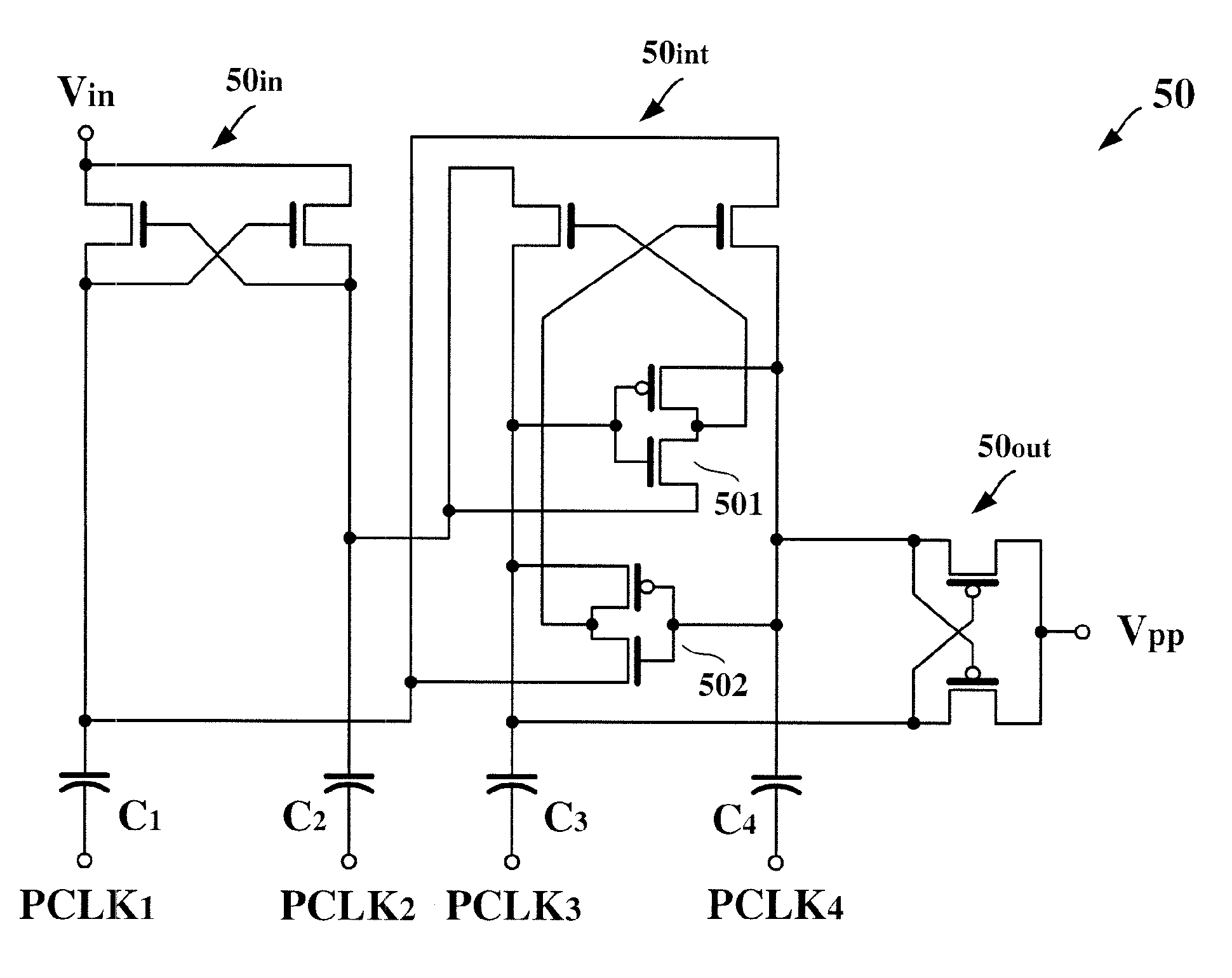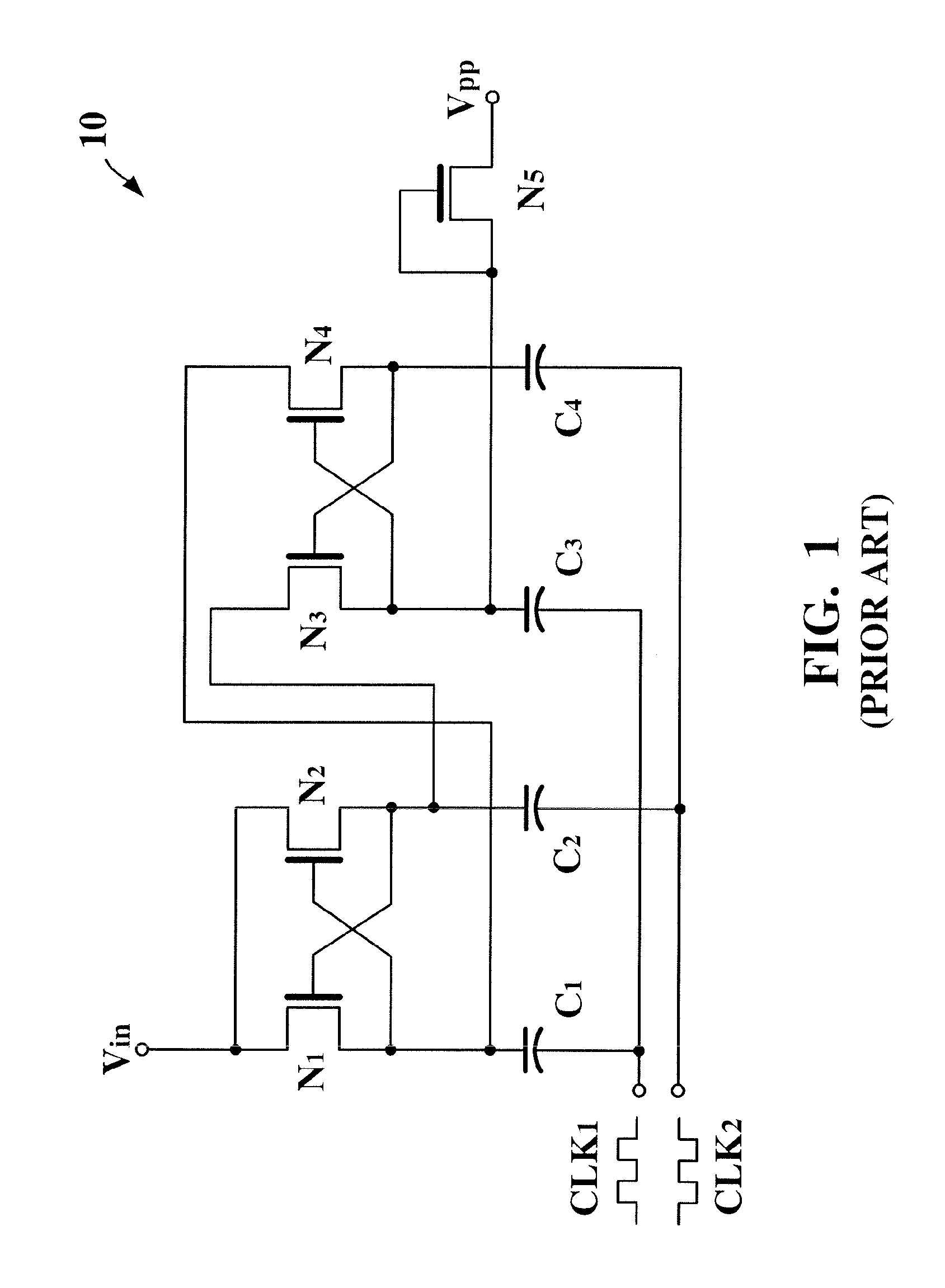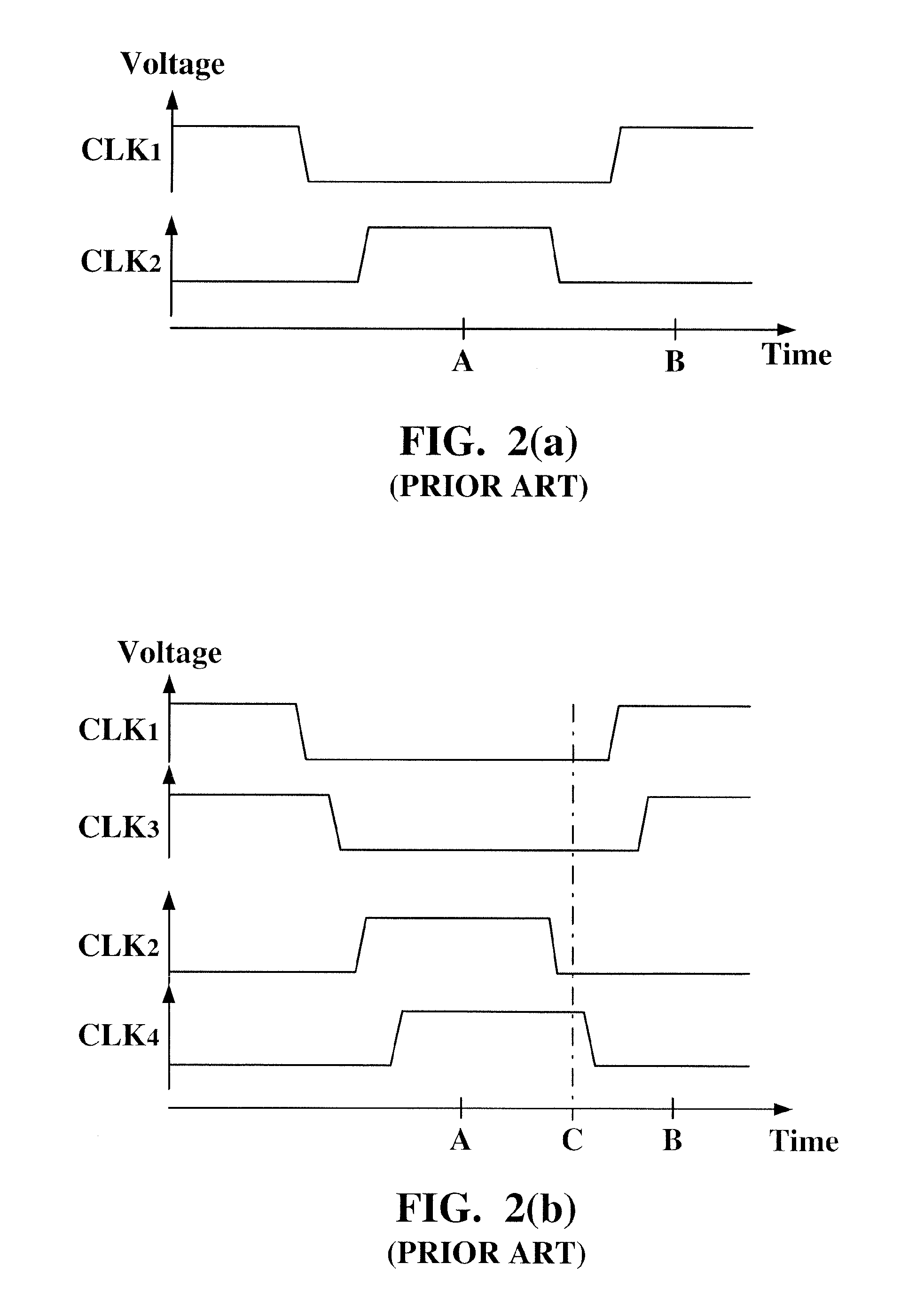High efficiency charge pump with prevention from reverse current
a charge pump and reverse current technology, applied in the field of charge pumps, can solve the problems of inevitably produced clock signals clksub>1 /sub> and clksub>2 /sub>, and achieve the effect of enhancing the efficiency of pumping voltag
- Summary
- Abstract
- Description
- Claims
- Application Information
AI Technical Summary
Benefits of technology
Problems solved by technology
Method used
Image
Examples
first embodiment
[0042]The charge pump 30 according to the present invention performs charge transferring operations under the control of the conventional clock signals CLK1 and CLK2 shown in FIG. 2(a) so as to achieve the voltage boosting characteristic. For the sake of simplicity, the description of the clock signals CLK1 and CLK2 should be referred to the paragraphs set forth and omitted in the following paragraphs.
[0043]As clearly seen from comparison of FIG. 1 and FIG. 3(a), the charge pump 30 according to the first embodiment of the present invention is different from the conventional charge pump 10 in that: (1) the intermediate stage 30int of the charge pump 30 is additionally provided with the reverse current preventing circuits 301 and 302, and (2) the output stage 30out is implemented by the PMOS transistors P1 and P2.
[0044]The first reverse current preventing circuit 301 applies a dynamic bias to the control electrode of the transistor N3 for preventing a reverse current from flowing in a...
third embodiment
[0055]Hereinafter is described in detail an operation of the charge pump 40 according to the present invention with reference to the drawings. When the clock signals PCLK1 and PCLK1 are both at the low level and the clock signals PCLK1 and PCLK3 are both at the high level, such as a time interval A shown in FIG. 4(b), the second current electrode of the transistor N1 is at a voltage of Vin, the second current electrode of the transistor N2 is at a voltage of 2*Vin, the second current electrode of the transistor N3 is at a voltage of 2*Vin, the second current electrode of the transistor N4 is at a voltage of 3*Vin. Subsequently, when the latter-stage clock signal PCLK4 makes a transition to the low level earlier in time and the former-stage clock signal PCLK2 still stays at the high level, such as a time interval B shown in FIG. 4(b), the control electrode of the transistor N3 since coupled to the second current electrode of the transistor N4 is pulled downwardly to a voltage of 2*Vi...
PUM
 Login to View More
Login to View More Abstract
Description
Claims
Application Information
 Login to View More
Login to View More - R&D
- Intellectual Property
- Life Sciences
- Materials
- Tech Scout
- Unparalleled Data Quality
- Higher Quality Content
- 60% Fewer Hallucinations
Browse by: Latest US Patents, China's latest patents, Technical Efficacy Thesaurus, Application Domain, Technology Topic, Popular Technical Reports.
© 2025 PatSnap. All rights reserved.Legal|Privacy policy|Modern Slavery Act Transparency Statement|Sitemap|About US| Contact US: help@patsnap.com



